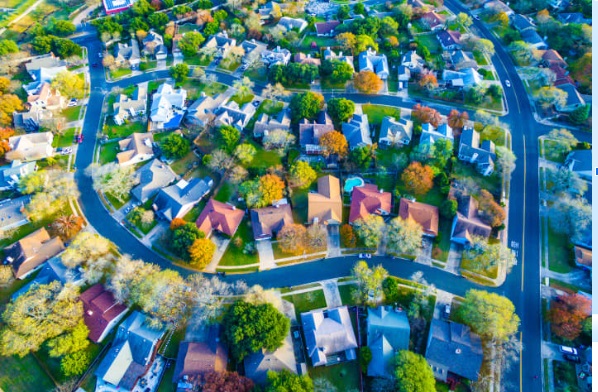
Introduction
Investing in U.S. real estate syndications offers opportunities for both accredited and non-accredited investors. While accredited investors enjoy greater access to diverse projects and the potential for higher returns, non-accredited investors can still participate through various avenues.
Accredited Investors
Accredited investors meet specific financial criteria set by the SEC, such as:
- An annual income of at least $200,000 ($300,000 for joint income with a spouse) for the past two years, with the expectation of similar income in the current year.
- A net worth exceeding $1 million, either individually or jointly with a spouse, excluding the value of their primary residence.
Benefits for accredited investors include:
- Access to a broader range of investment opportunities.
- Potential for higher returns.
- Fewer regulatory restrictions, streamlining the investment process.
Non-Accredited Investors
Non-accredited investors do not meet the SEC’s financial criteria but can still participate in real estate syndications through:
- Crowdfunding Platforms: Investing smaller amounts in real estate projects via online platforms.
- Joint Ventures: Partnering with accredited investors to pool resources and access larger deals.
- Real Estate Investment Trusts (REITs): Investing in REITs offers a diversified portfolio of real estate assets, providing a convenient entry into the real estate market.
Mitigating Risks in Real Estate Syndications
Regardless of investor status, thorough research, risk assessment, and seeking expert advice are crucial when making investment decisions in real estate syndications. Key strategies include:
- Diversification.
- Working with experienced sponsors.
- Implementing sound management practices.
Tax Implications of Investing in Syndicated Real Estate Deals
Investing in syndicated real estate deals, including multifamily properties, can offer significant tax benefits:
- Bonus Depreciation: Investors can take advantage of bonus depreciation, allowing them to immediately deduct a substantial portion of the cost of eligible property in the year it is placed in service. This can significantly reduce taxable income in the early years of the investment.
- Cost Segregation: This tax strategy accelerates depreciation by identifying and reclassifying personal property assets to shorter depreciation periods, which reduces current taxable income. Components such as appliances, landscaping, and certain improvements can be depreciated over shorter periods, resulting in larger early depreciation deductions.
Consult a tax professional for personalized advice tailored to your specific situation.
Conclusion
Both accredited and non-accredited investors can participate in U.S. real estate syndications. Understanding the differences between these investor types and the available options helps in making informed decisions to achieve financial goals.
FAQs
- What is the minimum investment required for a real estate syndication?
The minimum investment typically ranges from $25,000 to $100,000 or more. - Can I invest in syndicated real estate deals through a self-directed IRA?
Yes, many investors use self-directed IRAs for real estate syndications, subject to the syndicator’s policies. - What are the tax implications of investing in syndicated real estate deals?
Tax benefits can include bonus depreciation and cost segregation, which accelerate depreciation and reduce taxable income. Consult a tax professional for personalized advice. - How do I find experienced syndicators and evaluate their track records?
Research online, network with other investors, and attend real estate investment seminars. Assess past projects, experience, and transparency. - Can I exit a syndication real estate deal before the investment term ends?
Early exit can be challenging as these investments are illiquid. Some syndicators may offer buyout options or facilitate secondary sales, often with challenges and potential discounts.
As the world evolves, so does the real estate landscape, particularly in the multifamily sector. In 2024, various trends reshape how developers, investors, and residents perceive and engage with multifamily properties. From technological advancements to shifting demographics, here are five emerging trends in multifamily real estate for 2024.
Sustainable Living Spaces:

With a growing focus on environmental sustainability, multifamily properties are adapting to incorporate eco-friendly features and practices. Developers are increasingly integrating renewable energy sources such as solar panels, implementing energy-efficient appliances, and incorporating green spaces within communities. Additionally, initiatives like water conservation measures and waste reduction strategies are becoming standard in multifamily developments. Sustainable living spaces appeal to environmentally conscious tenants and contribute to cost savings and long-term value for property owners.
Smart Building Technologies:

Advancements in technology are revolutionizing multifamily real estate with the integration of smart building technologies. From smart thermostats and automated lighting systems to keyless entry and remote property management platforms, these technologies enhance convenience, security, and efficiency for residents and property managers. IoT (Internet of Things) devices enable real-time monitoring and control of various building systems, optimizing resource usage and improving overall tenant experience. As the demand for connected living spaces grows, expect widespread adoption of smart building solutions across multifamily properties in 2024 and beyond.
Flexibility in Design and Amenities:

The preferences and lifestyles of renters are evolving, driving the need for greater flexibility in multifamily property design and amenities. Developers focus on creating versatile living spaces that accommodate diverse tenant demographics and changing needs. This includes flexible floor plans that easily adapt to different living arrangements, such as co-living or multigenerational housing setups. Additionally, communal amenities like coworking spaces, fitness centers, and pet-friendly facilities are gaining popularity as tenants prioritize convenience and social connectivity. By offering a mix of amenities and flexible living options, multifamily properties can attract a wider range of tenants and foster a sense of community.
Rise of Urban Suburbs:

Urban suburbs are gaining traction as more people seek the benefits of suburban living without sacrificing urban conveniences. These mixed-use developments combine elements of both urban and suburban environments, offering walkable neighborhoods with access to retail, dining, and entertainment options. With the rise of remote work and flexible schedules, urban suburbs provide an attractive alternative for renters looking to balance city living and suburban tranquility. Multifamily developers are capitalizing on this trend by investing in suburban markets with strong job growth and transportation infrastructure, creating vibrant communities that cater to modern urban dwellers.
Emphasis on Health and Wellness:

The COVID-19 pandemic has heightened awareness of health and wellness concerns, prompting multifamily properties to prioritize resident safety and well-being. In 2024, expect to see an increased focus on health-centric design features and amenities, such as air purification systems, outdoor recreation areas, and wellness programming. Properties that promote physical and mental well-being will appeal to health-conscious tenants seeking a holistic living experience. Additionally, integrating telehealth services and fitness technology platforms allows residents to prioritize their health from the comfort of their homes. By prioritizing health and wellness initiatives, multifamily properties can differentiate themselves in a competitive market and attract discerning renters.
Conclusion:
The multifamily real estate landscape is evolving rapidly, driven by technological innovations, demographic shifts, and changing consumer preferences. In 2024, sustainability, technology, flexibility, urban suburbs, and health and wellness will emerge as key trends shaping the future of multifamily properties. By embracing these trends, developers and investors can capitalize on opportunities to create innovative, resilient communities that meet the evolving needs of tenants in the years to come.
